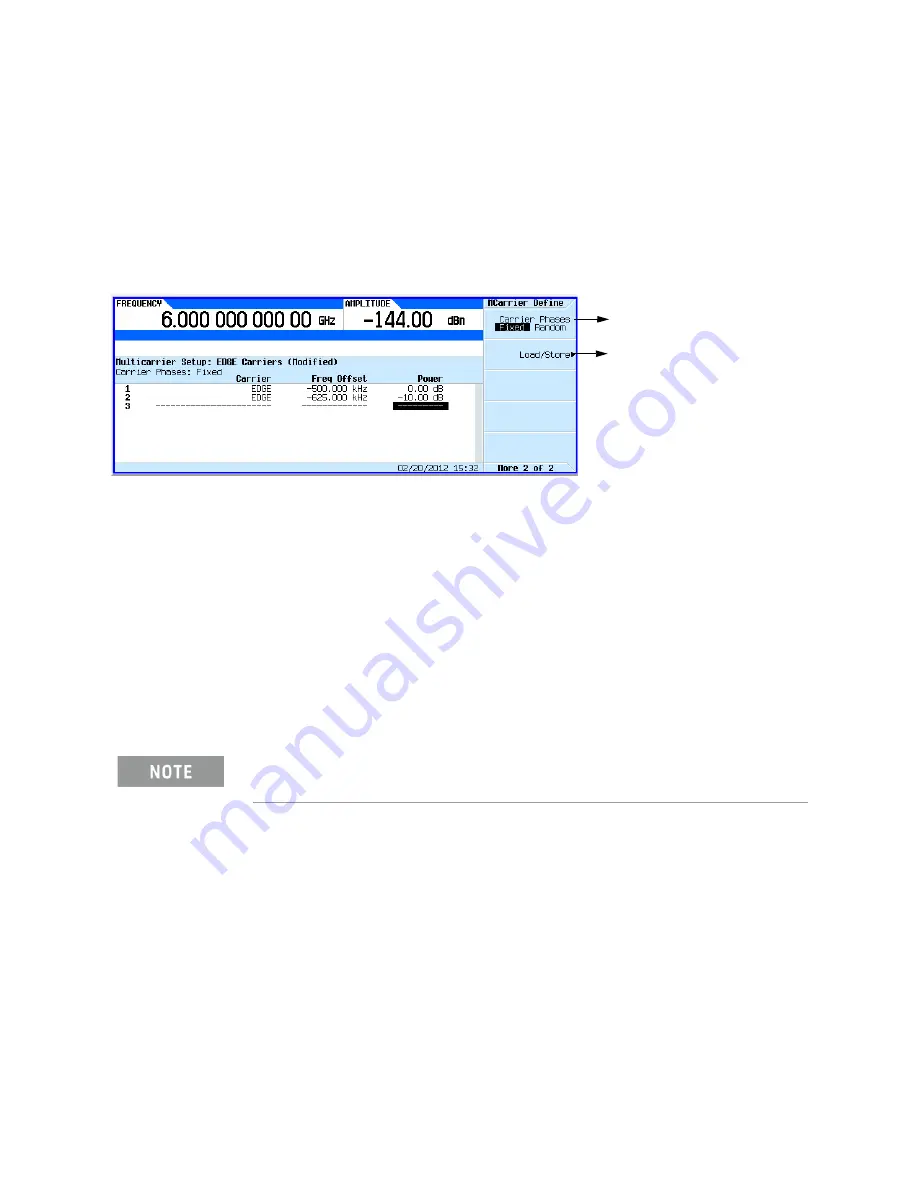
Keysight EXG and MXG X-Series Signal Generators User’s Guide
393
Custom Digital Modulation (Option 431)
Using the Arbitrary Waveform Generator
Storing a Custom Multicarrier Digital Modulation State
Using this procedure, you learn how to store a custom, multicarrier, digital modulation state to
non–volatile memory.
If you have not created a custom, multicarrier, digital modulation state, complete the steps in the
“Creating a Custom Multicarrier Digital Modulation State” on page 391
.
Figure 16-30
Storing a Custom Multicarrier Softkeys
1.
Return to the top–level Digital Modulation menu, where
Digital Modulation Off On
is the first
softkey.
2.
Press
Multicarrier Setup
>
More
>
Load/ Store
>
Store To File
.
If there is already a file name from the
Catalog of MDMOD Files
occupying the active entry
area, press the following key:
Clear Text
3.
Enter a file name (for example,
EDGEM1
) using the alpha keys and the numeric keypad with a
maximum length of 23 characters.
4.
Press
Enter
.
The user–defined, multicarrier, digital modulation state is now stored in non–volatile memory.
Applying Changes to an Active Multicarrier Digital Modulation State
If the digital modulation format is currently in use (
Digital Modulation Off On
set to On) while
changes are made in the
Multicarrier Setup
table editor, you must apply the changes before
the updated waveform will be generated.
From the
Multicarrier Setup
table editor, press
Apply Multicarrier
to apply the changes and
generate a new custom multicarrier digital modulation waveform based on the updated values.
The RF output amplitude, frequency, and operating state settings are not stored as part of a user–
defined, digital modulation state file.
Fixed:
All the carriers are set to a
phase of 0.
Random:
All of the carriers are
set to a random phase value.






























